Soho: 'People live here and bring up families here'
- Published
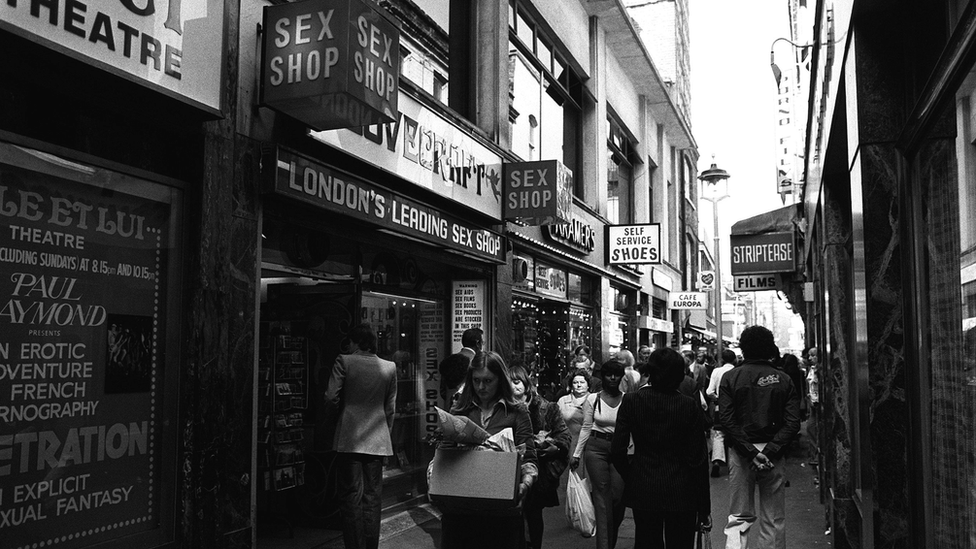
Strip clubs and sex shops dominated Brewer Street in 1977
Soho has long had a reputation as one of the most bohemian parts of London; a place for the arts, revelry and late-night entertainment. But this is also a place where people grow up, go to school and start families. What kind of future do its residents have in a time of spiralling rents and expanding chains of bars and nightclubs?
At the end of World War Two, there were about 30,000 people living in Soho, according to Tim Lord, who has lived here all his life and is chair of the Soho Society.
Now, he says, there are just 2,600.
While the neighbourhood is still home to houses, flats, offices, schools, shops, churches and GPs surgeries, it is much better known for its restaurants, bars and clubs.
Soho sits within the West End Cumulative Impact Zone, which recognises that crime, disorder and public nuisance "arises from the number of people there late at night; a considerable number of them being intoxicated".
In July, Westminster Council resolved to suspend the licence for Greek Street members' club The New Evaristo Club for a fortnight. It followed concerns that the late-night basement bar also known as Trishia's was breaching its licence conditions.
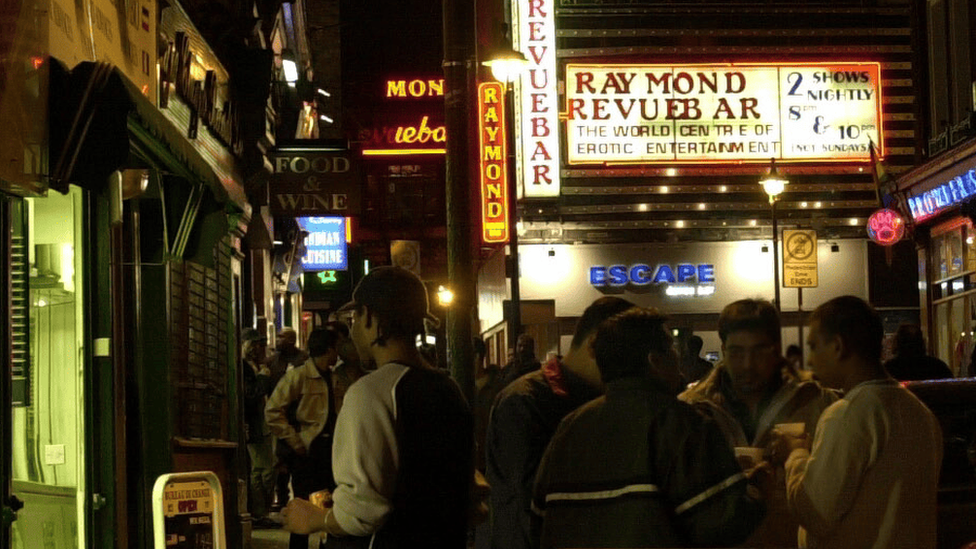
The strip club Raymond Revue Bar pictured in 2001. It closed three years later
There were almost 900 letters of support for the members' bar — but not all late-night licences are welcomed by Soho residents.
Simmons Bar, which has five sites in Soho, runs a five-hour-long happy hour six days a week. Soho-based artist and explorer Joel Peter Levack says residents are concerned about the number of bars owned by the chain.
"That's causing a bit of upset," he says. "You don't want too much of anything."
Mr Lord says some bars in the district seem to promote "getting drunk quickly".
"We don't want to go in that direction," he says. "People want to use Soho for profit. At the moment, residents are on their own."
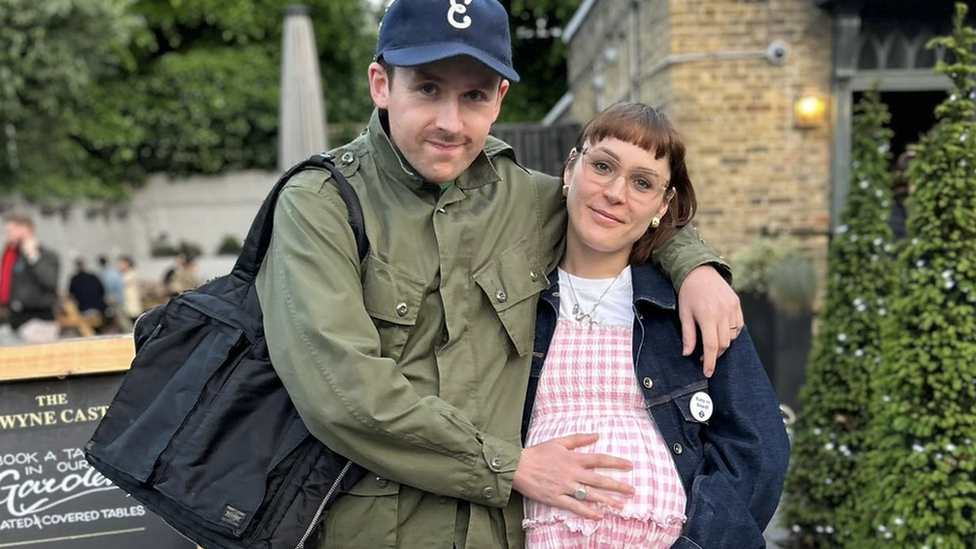
Tim and Fenella Earle say they are excited to raise their daughter in Soho
Tim and Fenella Earle, a couple who live in Soho with their newborn daughter, say that some businesses new to the area show a lack of care for Soho residents.
"People don't realise that people live here and bring up families here," Mrs Earle says.
The 33-year-old says she is "really excited about bringing up a child in Soho", but also a little "nervous and anxious, because Soho is changing".

Soho Society chair Tim Lord says more needs to be done for the people who live there
About 30% of Soho's residents live in social housing, and there are some 250 families with children under 18 living here.
The Earles are one of the couples who live in social housing.
They want to see their daughter go to Soho Parish School, the same primary that 31-year-old Mr Earle attended as a child.
Mr Earle, who has lived in Soho since he was about three years old, says there used to be a very strong community spirit.
"I love being from Soho," he says, adding: "Businesses that have been here for a long time respect the area they're in."
Mrs Earle adds: "I'm also quite excited she will have some of the experiences that Tim had."
'I can't find my way around now'
Yasmine El Ghamrawy worked in Soho as a runner for visual effects companies in her 20s.
The now 46-year-old says she used to know all of the streets in the district — and the best places to buy lunch.
"It was very exciting to be there. I had a studio apartment on Greek Street," she says.
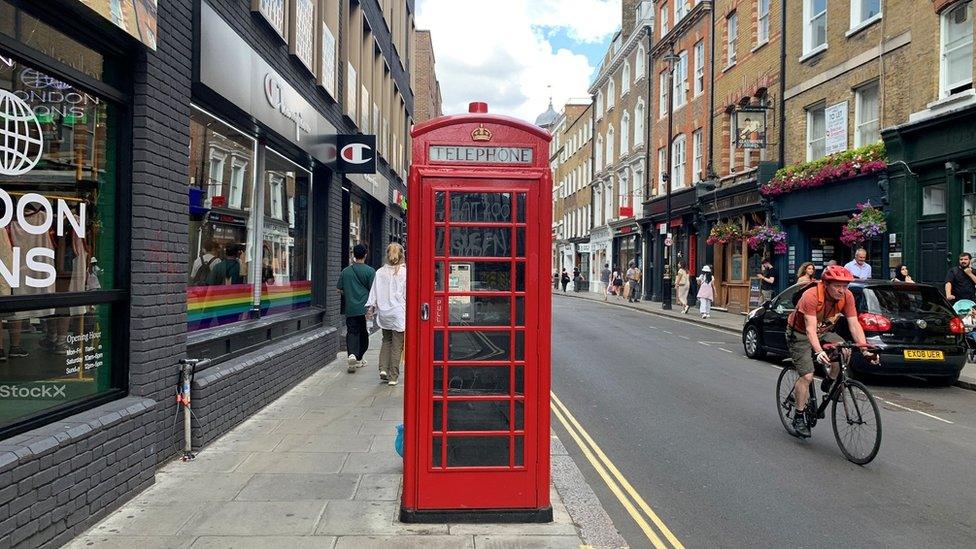
Yasmine El Ghamrawy, who used to live in Soho, said the area looks "generic" now
She moved to New Zealand in 2011 and returned in 2018, unable to recognise the area.
"I was surprised by how much it has changed. I couldn't find my way around and I knew Soho like the back of my hand," she says.
"The landmark sandwich shops and Italian cafes had gone.
"I prefer the old Soho. It had its own character. Now it looks very generic. It could be anywhere in London, it has lost its edge.
"There's lots of nice restaurants but to me it doesn't stand out any more."
Historical neighbourhood
Born in the 1600s, Soho was once home to notable figures including Karl Marx, Giacomo Casanova, William Blake, Isaac Newton and Wolfgang Amadeus Mozart.
By the 1970s its reputation was of a place dominated by strip clubs, cabaret and the arts.
Sound studios, film production and costume companies also found a home in the winding mass of streets, as did the now mostly departed record shops. Between 1946 and 1996, there were more than 170 of them in Soho, according to the British Record Shop Archive and Museum of Soho.
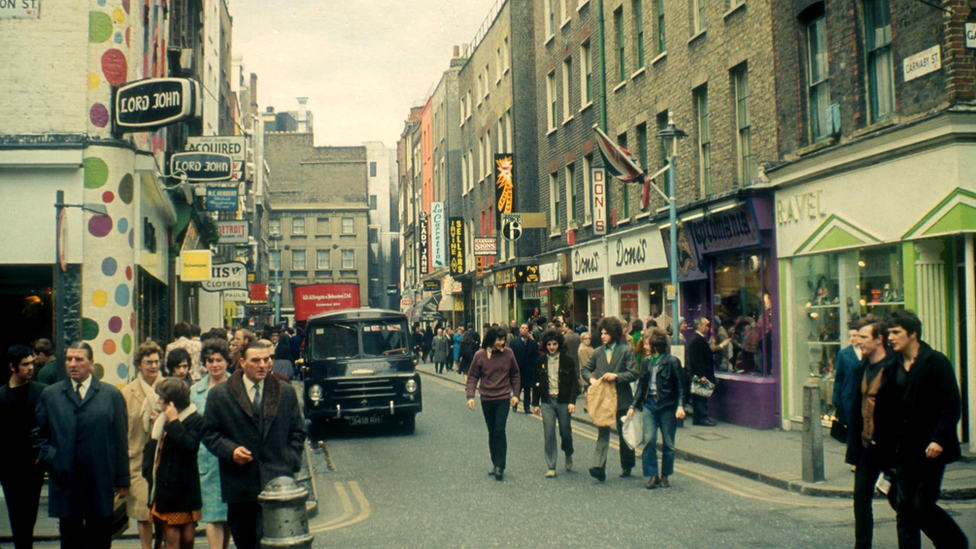
Soho in the 1970s hosted independent music shops, fashion boutiques and designers
While many companies that once thrived here, including 20th Century Fox, have moved out, the district is still a centre for the arts, according to Mr Levack.
"The great thing about Soho is it's a very resilient neighbourhood," the 42-year-old says.
"There's always chatter about, 'oh, it's changed', but there's nothing wrong with change. Change is the only constant."
By the 21st Century, gentrification saw sex shops begin closing and more high-end restaurants opening.
Loss of retail
Mr Lord says one of the biggest issues facing Soho is the influence of property development companies.
"We've lost an enormous amount of retail," he says .
"Soho, in the last 10 to 15 years, has seen a series of planning and licensing decisions that meant it lost a lot of things that were culturally interesting."
And the introduction of Class E building use in 2020, allowing shops to be transformed into restaurants without a planning application, has sped this up further, he says.
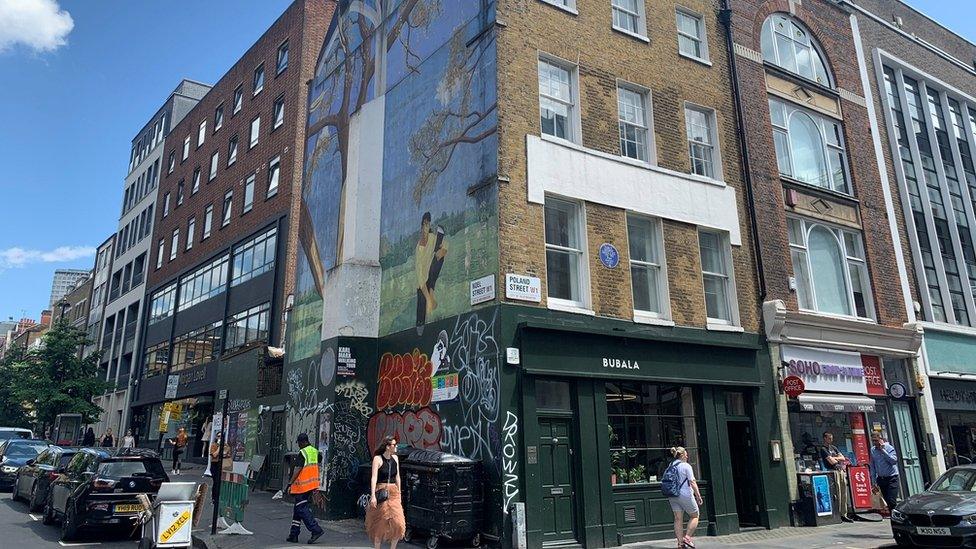
Soho Society chair Tim Lord says the area has lost a lot of "specialist makers"
He believes the area is becoming dominated by "more and more overpriced food".
"We do feel that we've lost a lot," he says. "We used to have lots of specialist makers.
"Soho is somewhere that has benefited enormously from immigration, which has created the culture."
A spokesperson for Westminster City Council says Soho is special "because it is home to a large and long-established residential neighbourhood in the heart of the city".
"We want to keep working with the community to preserve the unique identity and character of this much-loved area," it said.
"It's clear that we haven't always got this right in the past, and sometimes we are constrained in what we can do by national policies, but we totally understand the concerns about issues such as anti-social behaviour, noise problems, supporting the local economy whilst also preserving the special character of the area."

Follow BBC London on Facebook, external, Twitter , externaland Instagram, external. Send your story ideas to hellobbclondon@bbc.co.uk, external